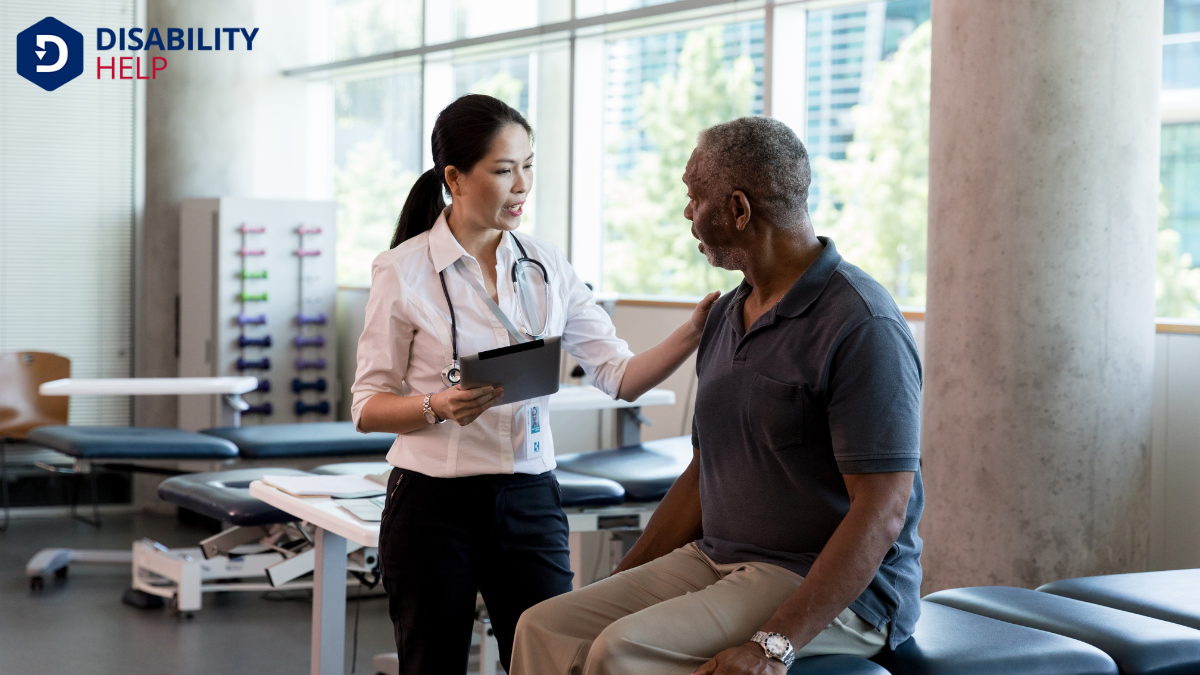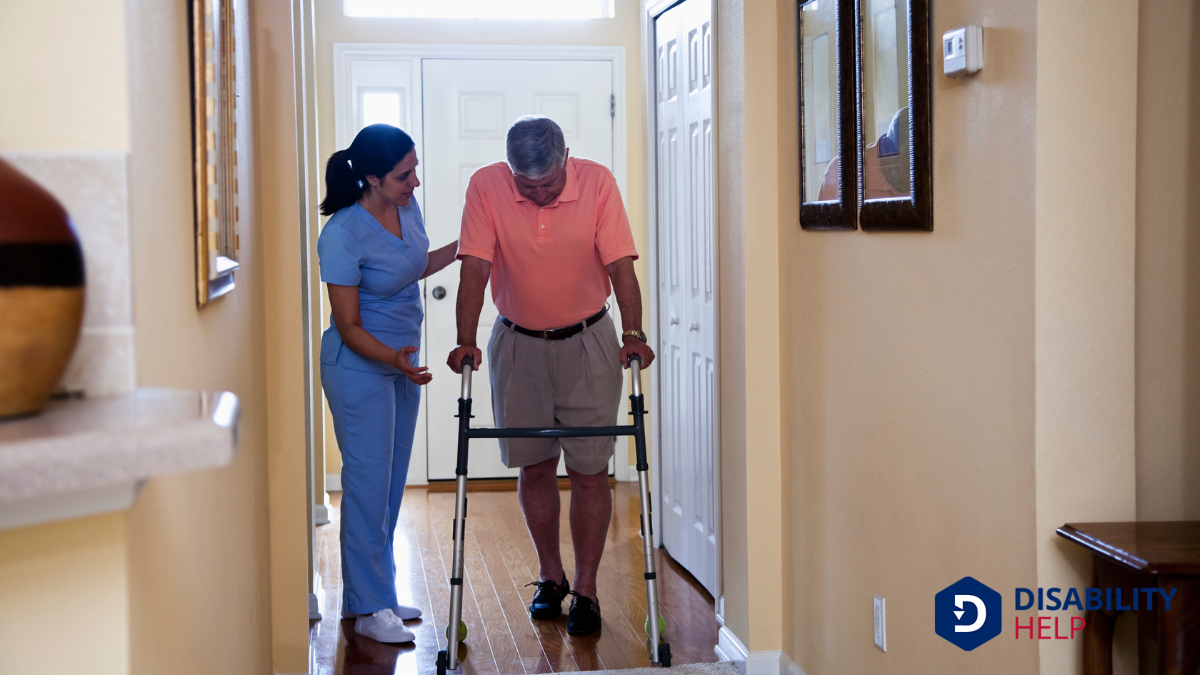Finding the right mobility aid can be a game-changer for enhancing our daily lives, yet it requires careful thought. We need to assess our individual needs, physical capabilities, and daily activities to guarantee we choose the perfect fit. With so many options available, from canes to wheelchairs, how do we decide what's best? Let's explore the key factors that will guide us toward a decision that balances comfort, functionality, and style.
Key Takeaways
- Assess personal mobility needs, including frequency of use and environment, to choose the appropriate aid.
- Evaluate physical capabilities like balance, strength, and endurance to match with suitable mobility aidsDevices designed to help individuals move around more easily, such as canes, walkers, or wheelchairs....
- Consult healthcare professionals for personalized assessments and expert recommendations on mobility aid options.
- Consider comfort and ergonomics, including adjustability and grip design, for prolonged and effective use.
- Factor in budget constraints and explore insurance or assistance programs for financial support.
Understanding Your Mobility Needs
Before choosing a mobility aid, it's important to assess our specific needs to confirm we're selecting the most suitable option.
Let's consider how often we require assistance. Do we need support daily, or just on occasion? Understanding the frequency of use helps in determining whether a lightweight, portable device or something more robust is necessary.
Next, we need to think about the environments we'll navigate. Are we primarily indoors, or do we need something versatile for outdoor terrains? This will guide us in selecting features like wheel size or the type of grip.
Lastly, let's take into account any personal preferences or lifestyle considerations. Do we need something easy to store or transport?
Assessing Physical Capabilities

How do we begin evaluating our physical capabilities for selecting the right mobility aid?
Let’s start by considering our daily activities and the challenges we face. Evaluating our physical capabilities helps us understand what we truly need.
Here are four key areas to assess:
- Balance: Can we stand or walk without support? Understanding our balance will determine if we need aids that offer stability.
- Strength: Do we've the strength to use certain aids, like walkers or canes, efficiently?
- Endurance: How long can we walk or stand before needing a rest? This will guide us in choosing between aids that require different levels of stamina.
- Range of Motion: Are there any limitations in our joints that affect movement? This evaluation guarantees the aid doesn't hinder our mobility further.
Exploring Different Types of Mobility Aids
Having assessed our physical capabilities, we’re ready to explore the variety of mobility aids available to suit our individual needs.
Let’s start with canes, which provide balance and support while walking. For those needing more stability, walkers might be the better option, offering a sturdy frame.
Rollators add convenience with wheels and a seat. If we require more support, wheelchairs, both manual and electric, can offer enhanced mobility.
For those who struggle with stairs, stairlifts may prove invaluable. Scooters, with their ease of use and portability, are perfect for outdoor activities.
Crutches can be a temporary solution for recovering injuries. As we consider these options, it’s important to think about our comfort, ease of use, and specific mobility challenges.
Considering Lifestyle and Daily Activities
When choosing the right mobility aid, we need to reflect on our lifestyle and daily activities to guarantee it fits seamlessly into our routine.
It’s crucial to evaluate how our typical day unfolds and what specific needs we might have. Here are some considerations to help us select the ideal mobility aid:
- Indoor vs. Outdoor Use: Do we need something specifically for indoor use, or will it need to handle outdoor terrains as well?
- Portability: Will we need to transport it regularly, requiring something lightweight and easy to fold?
- Activity Level: Are we using it for short distances or more extensive activities like shopping or social events?
- Space Constraints: Do we've limited storage space at home or in our vehicle that might affect our choice?
Evaluating Comfort and Ergonomics

Let's focus on comfort and ergonomics to guarantee our mobility aid truly supports us.
First, we should assess the handle grip design, as a comfortable grip can make a world of difference during use.
We also need to prioritize seat cushion support and evaluate adjustability features to enhance our overall experience and suit our specific needs.
Assess Handle Grip Design
Selecting the right handle grip design is essential for guaranteeing both comfort and ergonomics in a mobility aid. We need to evaluate handle grips carefully to enhance our overall experience. Here’s how we can assess them:
- Material: Look for grips made from materials that provide a comfortable, non-slip surface, like foam or gel. These materials help reduce pressure on our hands.
- Shape: Consider ergonomic shapes that fit the natural contour of our hands. This reduces strain and fatigue during prolonged use.
- Size: Grips should match the size of our hands. Ascertain they're neither too big nor too small to maintain control.
- Adjustability: Choose handles with adjustable features, allowing us to customize them for our comfort and posture needs.
Let's prioritize what feels right for us!
Prioritize Seat Cushion Support
After evaluating the importance of handle grips, we should focus on seat cushion support to maximize comfort and ergonomics in our mobility aid.
A well-designed seat cushion reduces pressure on sensitive areas, preventing discomfort and potential sores. Let’s seek cushions made of high-quality materials like memory foam or gel, which provide excellent support and distribute weight evenly.
When we’re testing different cushions, it’s essential to check for breathability. Materials that promote airflow can help keep us cool and comfortable during long periods of sitting.
Don’t forget to reflect on the ease of cleaning. Removable, washable covers are practical for maintaining hygiene.
Evaluate Adjustability Features
When considering mobility aids, we must carefully evaluate their adjustability features to confirm both comfort and ergonomics.
Adjustability guarantees that our chosen aid meets our unique needs and preferences, offering a personalized fit that enhances usability.
Here are key features to look for:
- Height Adjustability: The device should allow us to modify its height to align with our body dimensions. This reduces strain and improves posture.
- Handle Adjustments: Handles that can be adjusted in angle or position help us maintain a natural wrist position, minimizing discomfort.
- Seat and Backrest Modifications: For seated mobility aids, adjustable seats and backrests provide essential support and comfort.
- Foldability and Compactness: Aids that can be easily folded and compacted make storage and transport convenient, adding to their practical appeal.
Investigating Safety Features
How do we guarantee that our chosen mobility aid is as safe as it's functional? First, we should examine the braking system. Whether it's a walkerA mobility aid with a metal frame and sometimes wheels, used by individuals who need additional supp... or a wheelchair, reliable brakes are essential for preventing accidents.
Let’s check for non-slip grips, making sure of secure handling. For walkers, rubber-tipped legs provide stability on various surfaces. If we’re considering a rollator, look for a sturdy frame that can support our weight comfortably.
Reflective elements enhance visibility, especially in low-light conditions, which is critical for outdoor use. Additionally, we must make certain that all moving parts function smoothly without jerking or sticking.
Taking Portability and Storage Into Account
While guaranteeing our mobility aid is safe, we should also consider its portability and storage. A mobility aid that’s easy to transport and store can greatly enhance our experience.
Let’s explore a few key aspects:
- Folding Mechanism: Does our aid fold easily for travel? A compact fold can be a game-changer when space is limited.
- Weight: Is it lightweight? We’ll appreciate something we can lift effortlessly, especially if we’re frequently on the move.
- Storage Space: How much room does it take up? We need to confirm it fits in our car trunk or closet without hassle.
- Assembly: Can it be disassembled quickly? Quick assembly and disassembly can make our lives much simpler.
Prioritize these factors for a seamless experience!
Balancing Aesthetics and Functionality

As we choose a mobility aid, let's not forget that style and practicality can go hand in hand.
We can find options that allow for customization, ensuring comfort without sacrificing aesthetics.
Style Meets Practicality
When choosing a mobility aid, why should we sacrifice style for practicality? We don’t have to.
It’s possible to find mobility aids that are both functional and fashionable. Here's how we can balance aesthetics and functionality:
- Color Options: Choose from a variety of colors to match our personal style. Whether we prefer bold or neutral tones, there’s something for everyone.
- Slim Design: Look for aids with a sleek design that are easy to handle and transport. They’re not just visually appealing but also practical.
- Material Choices: Consider materials like lightweight aluminum or carbon fiber that enhance both the look and function.
- Accessories: Add-ons such as stylish bags or holders can complement the aid’s appearance while adding utility.
Let's embrace style and practicality together!
Customization for Comfort
Everyone deserves a mobility aid that fits their unique needs and personal style. When we seek customization for comfort, balancing aesthetics with functionality is key.
First, let's consider the materials. Lightweight, durable options like aluminum or carbon fiber enhance usability without sacrificing style. Custom grips and handles can provide comfort tailored to our specific needs, reducing strain and promoting ease of use.
Next, let's think about color and design. We can choose colors and patterns that reflect our personality, transforming a practical tool into a personal statement.
Height adjustments and foldable designs add flexibility, allowing us to adaptA grassroots disability rights organization in the U.S. that focuses on promoting community-based se... our aids to different environments and activities.
Finally, consulting with a professional can guarantee our mobility aid perfectly aligns with our lifestyle and preferences, enhancing both function and personal satisfaction.
Factoring in Budget and Financial Assistance
Choosing the right mobility aid often requires us to contemplate both our budget constraints and available financial assistance options.
It’s essential we find a balance between cost and quality, ensuring our chosen aid meets our needs without breaking the bank. Here are some steps we can take:
- Set a Budget: Determine how much we’re willing to spend. Knowing our limit helps narrow down choices.
- Explore Insurance Options: Check if our health insuranceA system for paying for medical services, often covering preventive, diagnostic, and treatment costs... covers a portion of the mobility aid’s cost. Some policies provide partial or full reimbursement.
- Seek Out Assistance Programs: Look into government or non-profit programs that offer financial aid specifically for mobility aids.
- Consider Used Equipment: Sometimes, gently used aids are available at a fraction of the cost, offering significant savings.
Seeking Professional Advice and Recommendations
Let's talk about the importance of consulting healthcare professionals when choosing a mobility aid.
They can offer expert mobility suggestions tailored to our individual needs, ensuring we make informed decisions.
Consulting Healthcare Professionals
Why should we consult healthcare professionals when choosing a mobility aid? These experts have the knowledge and experience to guide us in selecting the most suitable option.
Let’s explore some key reasons:
- Personalized Assessment: Professionals evaluate our specific needs, ensuring the aid matches our physical condition and lifestyle.
- Safety Assurance: They help us understand how to use the device safely, reducing the risk of injury.
- Customized Training: Healthcare professionals can provide training, helping us become comfortable and confident with our new aid.
- Access to Resources: They connect us to additional support services and resources that we mightn't be aware of.
Expert Mobility Suggestions
When we're looking for the right mobility aid, expert advice can be invaluable. Professionals like physical therapists and occupational therapists possess the expertise to assess our needs thoroughly.
They'll consider factors such as our physical condition, daily activities, and living environment. By understanding these elements, they can recommend a mobility aid that enhances our independence and safety.
Let's also tap into the knowledge of mobility aid specialists at medical supply stores. These experts are well-versed in the latest devices and innovations.
They can guide us through options, ensuring we make informed decisions. Additionally, online resources and forums offer insights from others who've faced similar challenges.
Conclusion
In our journey to find the right mobility aid, we’ve explored understanding our needs, evaluating our physical capabilities, and exploring various types of aids. We’ve considered how our lifestyle and daily activities align with comfort, ergonomics, and portability. Balancing aesthetics with functionality and factoring in budget constraints are essential steps. Let’s not forget the importance of seeking professional advice for personalized recommendations. Together, we’ll guarantee our chosen mobility aid enhances our mobility and quality of life.






